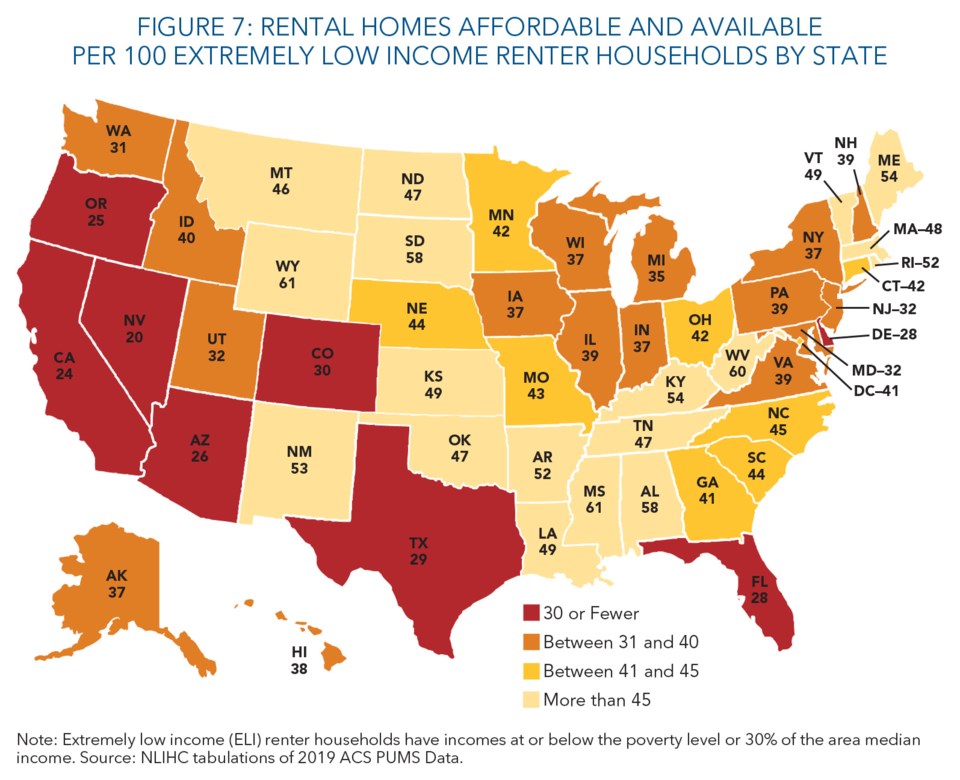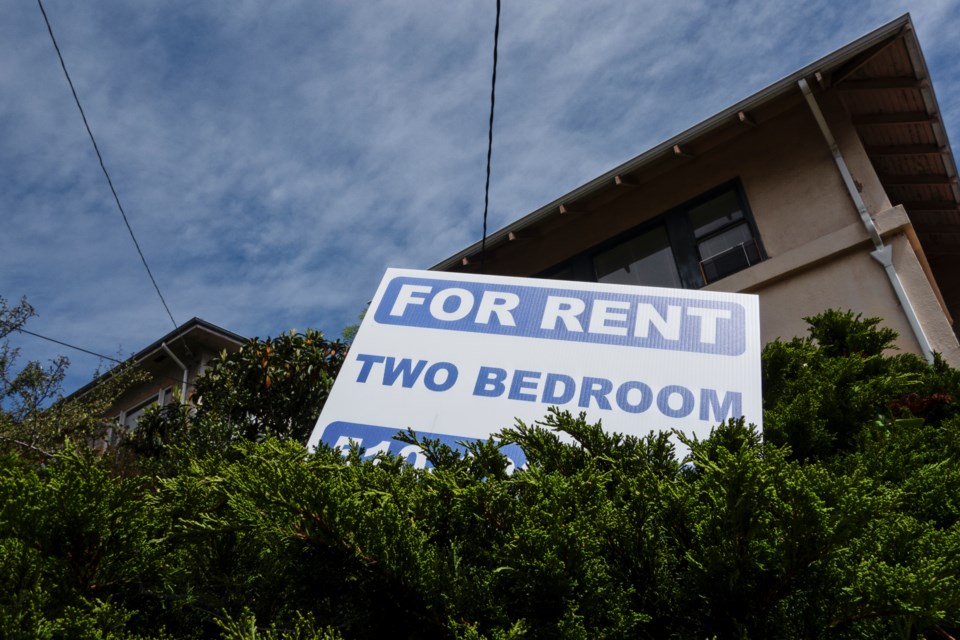Editor's note: This story was originally published by Colorado Newsline. Read the original story here.
***
While no state has a sufficient number of affordable housing units available for extremely low-income households, Colorado is particularly bad.
Nationally, Colorado ranks 42nd for having the lowest number of available affordable housing units for low-income households that live below the poverty level or are forced to spend more than 30% of their income on housing costs, according to a recent report by the National Low Income Housing Coalition, a research and advocacy organization.
 A National Low Income Housing Coalition graphic showing the states with the largest gap of affordable housing for extremely low-income households, according to the 2021 Gap report. By National Low Income Housing Coalition
A National Low Income Housing Coalition graphic showing the states with the largest gap of affordable housing for extremely low-income households, according to the 2021 Gap report. By National Low Income Housing CoalitionEconomic crisis caused by pandemic expected to worsen gap
The annual report is compiled using 2019 data from the American Community Survey, conducted by the U.S. Census Bureau.
The report does not account for those experiencing homelessness or the economic impact caused by the pandemic. In 2019, HUD gave the conservative estimate that 568,000 people were without stable housing across the country. The gap in affordable housing is likely much greater.
While many struggled with housing costs prior to the pandemic, due to rising rents coupled with stagnant wages, many renters have been left in even more precarious situations in the wake of the economic crisis caused by the pandemic.
Currently, more than 1 million people in Colorado — or 25.2% of Colorado adults — are behind on their rent or mortgage payments and could face eviction or foreclosure in the next two months, according to the Census Bureau’s Household Pulse Survey.
“We must invest in the construction and preservation of affordable housing in Colorado as a state that continues to attract investors for luxury units, and to increase funding for vouchers so low-income earners are able to continue to live and thrive in housing in the midst of an unpredictable and disastrous pandemic,” Alderman said.
Extremely low-income households forced to compete for limited affordable housing
The report highlights how homes that are affordable to extremely low-income renters — who are disproportionately people of color — are not necessarily available to them.
Of the 7.4 million homes affordable to extremely low-income households across the country, only 1.1 million are occupied by very low-income households, one million are occupied by low-income households, 400,000 are occupied by middle-income households, and 900,000 are occupied by households with above-median incomes, according to the report.
Without housing assistance, a family of four with poverty-level income could afford a monthly rent of no more than $655 in 2020, according to the report, while the average cost of a modest two-bedroom rental home at the fair market rent was $1,246.
“When higher-income households occupy rental homes also affordable to lower-income households, they render those homes unavailable to the lower-income households,” the authors of the report wrote. “Extremely low-income renters must compete with all higher-income households for the limited number of rental homes affordable to them in the private market.”
Nationwide, Black, Latino and Native Americans households are significantly more likely than white households to have extremely low incomes due to longstanding income inequality, housing discrimination and systemic racism.
According to the report, 20% of Black households, 18% of American Indian or Alaska Native households, 14% of Latino households, and 10% of Asian households are extremely low-income renters. In comparison, only 6% of white households are extremely low-income renters.
Colorado Newsline is part of States Newsroom, a network of news outlets supported by grants and a coalition of donors as a 501c(3) public charity. Colorado Newsline maintains editorial independence. Contact Editor Quentin Young for questions: [email protected]. Follow Colorado Newsline on Facebook and Twitter.


.jpg;w=120;h=80;mode=crop)
